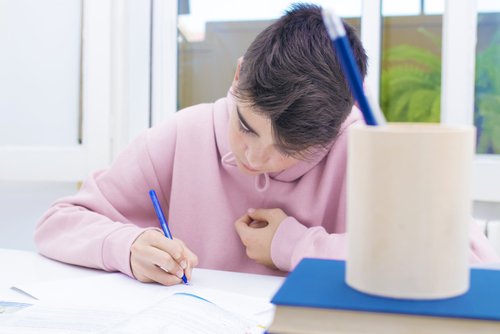7 Ways to Encourage Creative Writing in Children

Teachers should especially keep in mind the importance of promoting activities that encourage creative writing. Designating classroom time dedicated to these practices is an extremely enriching habit.
It’s also a good custom to have at home. Many families establish “reading hours” in which the entire family reads. In the same way, you can establish a specific time for creative writing. During this time, each family member will practice creative writing.
It’s important not to take things too fast. The recommended age for creative writing activities is from 8–9 years of age and on. By this time, most children have already learned to read and write correctly.
The benefits of encouraging creative writing in children
- Creativity is fundamental for human beings. It’s the key to problem solving. Therefore, encouraging and reinforcing creativity by all means possible is extremely beneficial.
- Creative writing is also fun for children. Children experience the world of stories with great intensity. This gives them a natural interest in the creative possibilities of language.
- Creativity writing also helps improve children’s attitudes towards learning in general. It boosts attention, memory and comprehension.
- Creative writing is extremely valuable for language acquisition. The carrying out of certain creative writing activities in children gives them a broader vocabulary. It also allows for a more fluid use of language structures.

Ideas for encouraging creative writing in children
1. Comic strips or cartoons
One strategy for encouraging creative writing in children is to have them tell a story with images. It’s best to limit the comic strip to about 4 or 5 images. Then, based on the drawings, ask the child to write the story.
2. Inspiring scenes
Another way to boost your child’s creative writing is to prepare a scene using dolls, toys and other objects. Then, encourage your child to create a story based on what he or she observes. Using items that your child is familiar with – such as a favorite playtoy – will further activate your little one’s imagination.
“These activities are recommended for children ages 8 or 9, or older”
3. The magical character
The child creates a character with elements that he or she finds around the house. This can include: A ball, pieces of cloth, paper, popsicle sticks, etc. Invite the child to add facial features to the character and to give it a name.
This will be the child’s magical character, and he or she will possess any magical powers that your child decides. What’s most important is that the magical character will always seek to do what’s right.
Now, ask your child to come up with different scenarios that involve the magical character. Then, have your child write these stories down. Finally, your child can combine all of the stories to compose a book.
4. The story of the future
Many children enjoy writing stories in which they themselves are adults. You might need to guide them with some questions beforehand. This activity is good for getting children to think about their future plans and aspirations.

5. An encounter between superheroes and princesses
The child will create a story whose main characters will be superheroes or princesses that normally share no connection. For example, he or she can write a story that involves both Spiderman and Sleeping Beauty. This is an excellent way to let your child’s imagination take flight.
6. The hidden story within the image
Show your child a photograph and a picture out of a magazine that shows a person or an animal. Make sure there is some background to the photo to set the scene, such as a landscape. Then, have your child write the hidden story within the image.
7. Collective stories
This is a great group activity. You can use any other suggestions above as a starting point. Each child will write a sentence to begin the story, and then pass the paper to a neighbor to the right.
Then each child will write another sentence to continue the story, and so on. The rotation continues until each child gets his or her original paper back. Based on what his or her partners added to the story, he or she will then continue writing.
In order to take maximum advantage of these creative writing exercises, there should always be an adult present to act as a guide. Most likely, your child will need some help at first to discover the ideas he or she has inside.
All cited sources were thoroughly reviewed by our team to ensure their quality, reliability, currency, and validity. The bibliography of this article was considered reliable and of academic or scientific accuracy.
- Alonso, L., & Aguirre de Ramírez, R. (2004). La escritura creativa en la escuela: una experiencia pedagógica (de, con) juegos lingüísticos y metáforas. Revista de Pedagogía.
- Alvarez Rodríguez, M. I. (2009). Escritura creativa. Aplicación de las técnicas de Gianni Rodari. Educere, 13(44). https://www.redalyc.org/pdf/356/35614571010.pdf
- Borbón, S. (2000). Estrategias para implementar la creatividad. Colombia: Magisterio
This text is provided for informational purposes only and does not replace consultation with a professional. If in doubt, consult your specialist.
